Kerry Walton
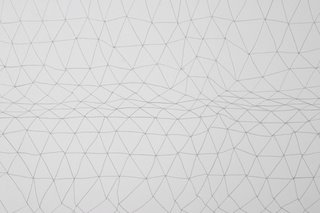
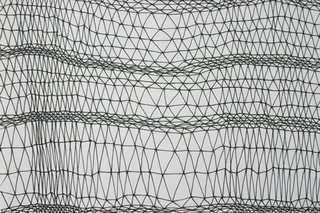
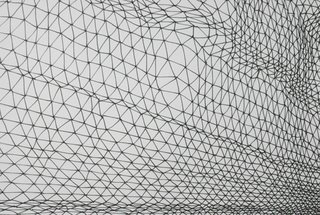
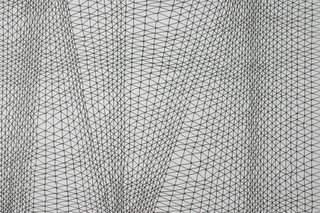
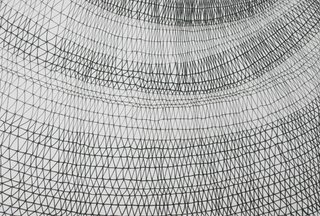
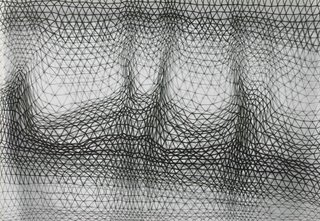
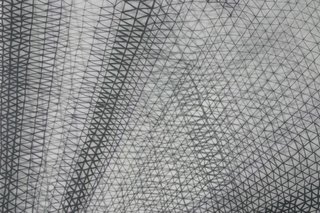
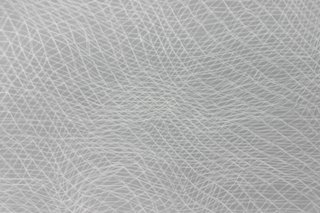
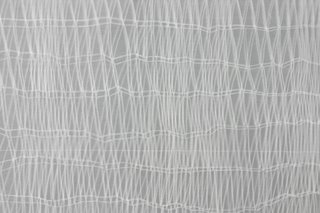
The images above represent the development of the Triptych project through a series of drawings which have explored the repeated use of the triangle symbol to create a range of net-like effects, using a range of drawing media. The most recent drawings have used layering techniques to build a more complex and 3 dimensional quality.
Background
For a number of year as a Textile designer I have been making prototype and sample pieces to be sold through agents or at Textile trade fairs. These designs have been variously directly translated by the manufacturer into production pieces or alternatively used as inspiration for the development of new ranges.
Drawing has always been part of the design process, a means to an end, and not the outcome. The outcomes have been the Textiles pieces, and a methodology has emerged involving the collection of imagery, and recording and analysing through drawing and photography. This visual research is then developed through a variety of processes, towards a textiles conclusion.These are often not literal interpretations of the research but develop a sense of the subject.
I have an interest in the structure and construction of the Texiles and the pieces tend not to be image based. My background in weaving has meant working within the restrictions of a process which is largely based on straight lines working in parallel with one another. There has always been a quality of drawing running through the pieces and thread is often used to create linear marks- a single thread creates a line, fibres create tonal effects. I frequently use restricted colour palettes – very often the inherent colour of the materials in their un-dyed state is sufficient: linen, cotton, silk, man made fibres, polythene and paper, concentrating on line, tone, effects of light and 3D surface qualities.
The Textile work has recently developed away from traditional boundaries of Textiles – Weave, Print and Embroidery and encompasses new processes such as heat bonding, laser cutting and multi-media approaches. These new processes have allowed me to develop the work without the constraints of a formal process – weaving – and to approach the work as drawing with Textile media – thread, fabric, stitch.
Re-occurring themes have been repetition, sequence, tonal gradation, shading and layering, and repetitive use of line and simple geometric forms. This is reflected and developed in the Triptych work where ideas have been allowed to develop through drawing without the urgency of processing quite quickly to a design stage.
Drawing has always been part of the design process, a means to an end, and not the outcome. The outcomes have been the Textiles pieces, and a methodology has emerged involving the collection of imagery, and recording and analysing through drawing and photography. This visual research is then developed through a variety of processes, towards a textiles conclusion.These are often not literal interpretations of the research but develop a sense of the subject.
I have an interest in the structure and construction of the Texiles and the pieces tend not to be image based. My background in weaving has meant working within the restrictions of a process which is largely based on straight lines working in parallel with one another. There has always been a quality of drawing running through the pieces and thread is often used to create linear marks- a single thread creates a line, fibres create tonal effects. I frequently use restricted colour palettes – very often the inherent colour of the materials in their un-dyed state is sufficient: linen, cotton, silk, man made fibres, polythene and paper, concentrating on line, tone, effects of light and 3D surface qualities.
The Textile work has recently developed away from traditional boundaries of Textiles – Weave, Print and Embroidery and encompasses new processes such as heat bonding, laser cutting and multi-media approaches. These new processes have allowed me to develop the work without the constraints of a formal process – weaving – and to approach the work as drawing with Textile media – thread, fabric, stitch.
Re-occurring themes have been repetition, sequence, tonal gradation, shading and layering, and repetitive use of line and simple geometric forms. This is reflected and developed in the Triptych work where ideas have been allowed to develop through drawing without the urgency of processing quite quickly to a design stage.
Triptych
The Triptych project has given me the opportunity to develop some of the themes apparent in my textile work and explore these through drawing.
I have been able to explore a more meaningful approach, without necessarily having to address function.
The project provides an opportunity, drawing provides a freedom un-restrained by commercial constraints and design considerations: is it on trend? is it what the buyers want? can it be commercially produced?
Sampling also rarely provides an opportunity to address issues of scale, but drawing will allow exploration of the ideas in a range of scale and media.
The next phase of the project will involve working in the same way I have been but making use of textile media.
The outcome will be a drawing response, using Textile media.
Recent drawings have begun to explore the potential for layers of similar imagery, and it is my intention to further these experiments through the use of fabric and stitch, transparency of some of the materials will allow for playing with space and light.
I am currently scanning the drawings and using Illustrator to generate files to operate laser cutting equipment to cut and mark the net effects onto a variety of textile grounds, and paper. Layers of laser cut fabric, paper and possibly other materials of different tone, density and transparency will be layered and stretched, stitched and printed to create a textile drawing which will be a piece in it’s own right, and not a fragment of a whole, nor intended for a specified Fashion or Interiors context.
Has working on this subject/theme altered your drawing process in any way?
The focus has been on the drawing and it's development, and drawing as an outcome rather than as part of a design process.
Has the idea of a possible collaborative outcome altered your thinking/working methods in any way?
The nature of collaboration has not really altered my approach, but I have used the opportunity to think more about the development of the work and less about a defined outcome.
How has the experience of your practice being reviewed and viewed by your peers in Triptych influenced the work?
That has not influenced the practice, however, I have made a conscious effort to organise the work in a kind of chronological sequence so that the development of the work can be followed without the need for accompanying text.
Have you discussed this piece of work/process with anyone else in Triptych while carrying out the work?
I have discussued the work on one occasion with Nick Rodgers, but so far it has been important for me to build up a body of drawing, and to gain confidence in this new approach before inviting discussion.
Has anything you saw at the Triptych IMMA symposium influenced your thinking or process in any way?
I did not attend the symposium.
What collaborative outcome would you suggest as being appropriate for this
research group?
I suggest that an exhibtion of the drawings and development work would best demonstrate the diversity of the project, and approaches through a variety of media and disciplines.

0 Comments:
Post a Comment
Subscribe to Post Comments [Atom]
<< Home